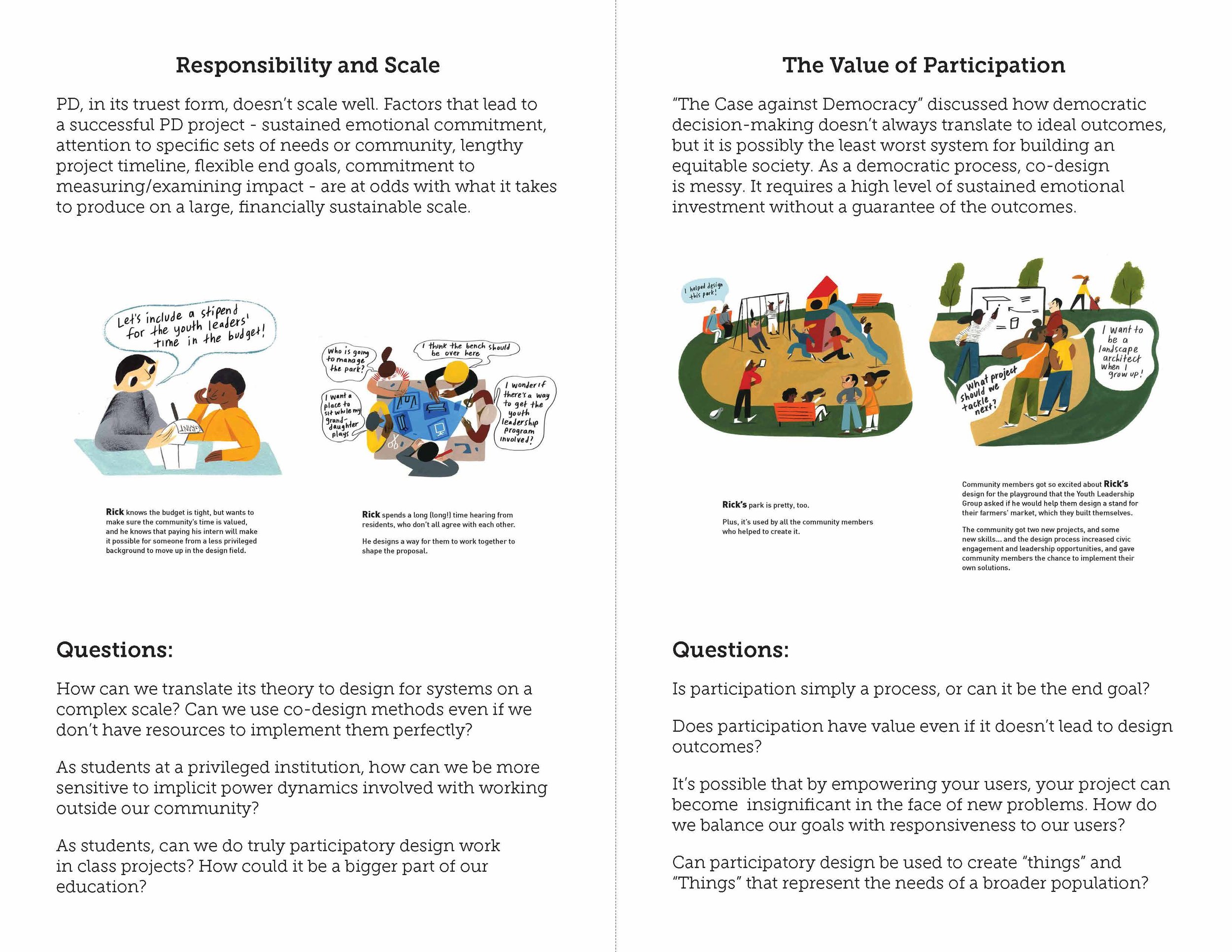I had the honor of being invited to speak on communication best practices in healthcare user experience research. Give it a listen!
Some of my favorite communication best practices:
When it comes to complex subject material, it always helps that I’m never the expert. As a designer, I’m always brought in to be the outsider/novice. So I’m not emotionally attached to previous ways of communicating something and can trust my ability to pick out key insights from the noise. My goal is always to make something that feels simple that’s still an honest reflection of the true complexity.
As a researcher, keeper of the data and the stories, it can be so difficult to edit out quotes or analyses that detract from your call to action. But just because you know it, doesn’t mean you need to show it. So you need to be a ruthless editor.
To co-opt the Teddy Roosevelt truism, “Speak softly – and carry a big appendix.” If something feels extraneous, but I think it could come up in questions or be useful down the line, I create extra slides, or make my raw data/analysis accessible so that those who want to go down rabbit holes have every opportunity to without interfering.
Understand what type of appeal you’re making and be careful not to try to boil the ocean. I like to break down intent by “Head, heart, and hand.”
Head – Is this about a gap in knowledge or understanding?
Heart – Is this about aligning on emotions or motivations?
Hand – Do we not know how to act on what we know and feel?
Listening can be such an undervalued aspect of communication. I’m disciplined in listening with intent to understand, not to respond. In my first year working in healthcare tech, the imposter syndrome was overwhelming. I was the least academically credentialed person in every room I was in and I was defensive – I asked questions to show them I know what I’m talking about. And that is a horrible way to connect and learn from people. If you can let go of your ego a little bit, people can be surprisingly gracious teachers.
Create space for people to ask “dumb questions” and model this behavior when others are presenting to you. Give people pause and permission to say when something isn’t clicking and be prepared with a fat appendix of alternatives. We have all been stuck in presentations where something technical goes over our head and then we kind of give up and check out. We blame ourselves instead of blaming poor communication. There’s power in confidently acknowledging what you don’t know. And experts love being asked questions; they want nothing more than to clear up that confusing bit from a few slides back.

